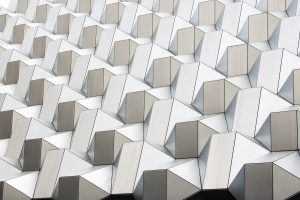IBN 3-D Printing Program

The IBN 3-D Printing program on April 26, 2017 at the Youngstown Business Incubator was very interesting and informative. The techniques in these manufacturing processes are only about 25 years old versus centuries of development of traditional manufacturing processes. This means that it is a totally new ball game in working with these processes.
3-D Printing suggests that parts made by this process are built up in layers. To some extent this is true, but there are several different processes that fall into this group. In each case the process involves adding material to build up a product, part, or tool. This contrasts with traditional manufacturing where typically, material is removed to form the product, part, or tool. Thus, the name has evolved to Additive Manufacturing.
These processes allow for easier forming of very complex shapes. In some cases, an additive manufactured product may replace a complex assembled product. Materials involved range from polymers to metals to ceramics.
The management of additive manufacturing is different from traditional manufacturing. Design and process times are very different, and often much shorter than traditional manufacturing. Communication standards such as drawings, quality specifications, and process certifications for these new processes are not yet in place. Development of standards is an important part of the work being done by the Youngstown additive manufacturing community.
At this stage in the development, the real business applications are focused on harvesting the low-hanging fruit. This means parts and tooling in relatively low volume situations. But, the potential is great and rapid progress is likely.
Replacement parts are a significant current application, particularly for older, non-critical parts. But, the technology itself presents a challenge. Some replacement parts might be made by a device owner scanning the original part, and then making a part on a relatively low-cost home 3-D printer.
A tour of the additive manufacturing center following the presentation revealed a wide range of products, parts, and tooling that have been produced. They range from small to large, and from simple to complex. The machinery and product complexity were impressive.
The bottom line is that this technology will have an impact on the manufacturing industry. Those that learn about this family of processes, and consider how they can change product performance, cost structures, and lead times will position themselves for future competition.

